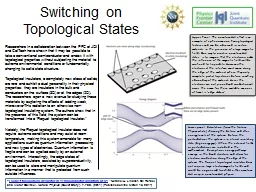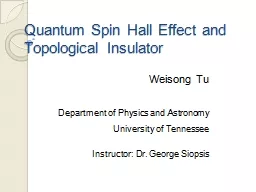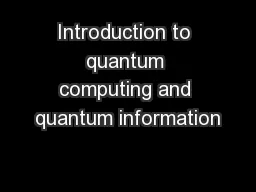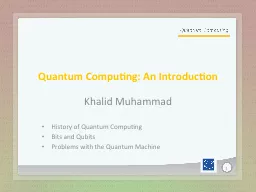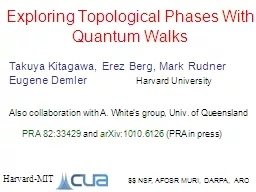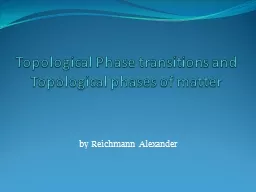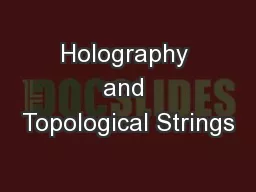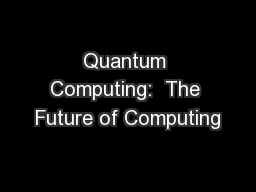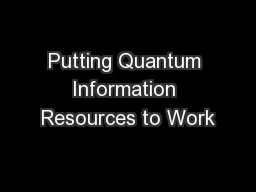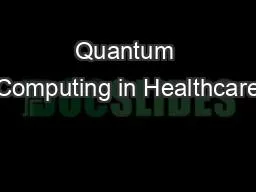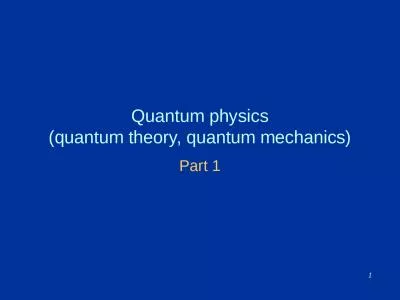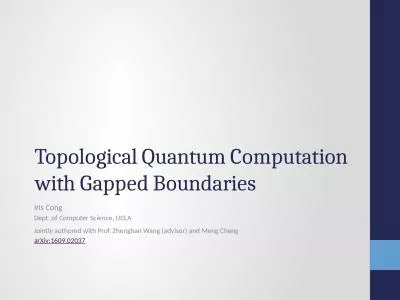PPT-Topological Quantum Computing
Author : conchita-marotz | Published Date : 2018-03-18
Michael Freedman April 23 2009 Parsa Bonderson Adrian Feiguin Matthew Fisher Michael Freedman Matthew Hastings Ribhu Kaul Scott Morrison Chetan Nayak Simon Trebst
Presentation Embed Code
Download Presentation
Download Presentation The PPT/PDF document "Topological Quantum Computing" is the property of its rightful owner. Permission is granted to download and print the materials on this website for personal, non-commercial use only, and to display it on your personal computer provided you do not modify the materials and that you retain all copyright notices contained in the materials. By downloading content from our website, you accept the terms of this agreement.
Topological Quantum Computing: Transcript
Download Rules Of Document
"Topological Quantum Computing"The content belongs to its owner. You may download and print it for personal use, without modification, and keep all copyright notices. By downloading, you agree to these terms.
Related Documents


